Optimization of the Orifice Shape of Cooling Fan Units for High Flow Rate and Low-Level Noise in Outdoor Air Conditioning Units
Abstract
:1. Introduction
2. Targeted Axial-Flow Fan in Outdoor Units
3. Experimental Analysis of Targeted Outdoor Units
3.1. Experimental Set-Up for Characterizing Flow Performance
3.2. Experimental Set-Up for Characterizing Noise Performance
4. Numerical Methods and Validation
4.1. Governing Equations and Numerical Methods
4.2. Validation of Numerical Model
5. Numerical Results of Axial Fan System of Outdoor Unit
5.1. Analysis of Flow Field Driven by Axial Fan Systems of Outdoor Units
5.2. Analysis of Aeroacoustic Performance of the Fan System of Outdoor Units
6. Optimization of Orifice Shape
6.1. Optimization Method
6.2. Geometric Parameters for Optimization of Orifice Shape
6.3. Optimization Results
7. Experimental Validation of Optimized Design Using Engineering Samples
8. Conclusions
Author Contributions
Funding
Acknowledgments
Conflicts of Interest
References
- Lee, S.; Heo, S.; Cheong, C. Prediction and reduction of internal blade-passing frequency noise of the centrifugal fan in a refrigerator. Int. J. Refrig. 2010, 33, 1129–1141. [Google Scholar] [CrossRef]
- Heo, S.; Cheong, C.; Kim, T.H. Development of low-noise centrifugal fans for a refrigerator using inclined S-shaped trailing edge. Int. J. Refrig. 2011, 34, 2076–2091. [Google Scholar] [CrossRef]
- Heo, S.; Cheong, C.; Kim, T. Unsteady Fast Random Particle Mesh method for efficient prediction of tonal and broadband noises of a centrifugal fan unit. AIP Adv. 2015, 5, 97–133. [Google Scholar] [CrossRef]
- Heo, S.; Ha, M.; Kim, T.H.; Cheong, C. Development of high-performance and low-noise axial-flow fan units in their local operating region. J. Mech. Sci. Technol. 2015, 29, 3653–3662. [Google Scholar] [CrossRef]
- Zhao, X.; Sun, J.; Zhang, Z. Prediction and measurement of axial flow fan aerodynamic and aeroacoustic performance in a split-type air-conditioner outdoor unit. Int. J. Refrig. 2013, 36, 1098–1108. [Google Scholar] [CrossRef]
- Jiang, C.L.; Chen, J.P.; Chen, Z.J.; Tian, J.; OuYang, H.; Du, Z.H. Experimental and numerical study on aeroacoustic sound of axial flow fan in room air conditioner. Appl. Acoust. 2007, 68, 458–472. [Google Scholar] [CrossRef]
- Wright, T.; Simmons, W.E. Blade sweep for low-speed axial fans. In ASME 1989 International Gas Turbine and Aeroengine Congress and Exposition; American Society of Mechanical Engineers: Amsterdam, The Netherlands, 1989. [Google Scholar]
- Ye, X.; Li, P.; Li, C.; Ding, X. Numerical investigation of blade tip grooving effect on performance and dynamics of an axial flow fan. Energy 2015, 82, 556–569. [Google Scholar] [CrossRef]
- Wang, H.; Tian, J.; Ouyang, H.; Wu, Y.; Du, Z. Aerodynamic performance improvement of up-flow outdoor unit of air conditioner by redesigning the bell-mouth profile. Int. J. Refrig. 2014, 46, 173–184. [Google Scholar] [CrossRef]
- Hu, J.; Ding, G. Effect of deflecting ring on noise generated by outdoor set of a split-unit air conditioner. Int. J. Refrig. 2006, 29, 505–513. [Google Scholar] [CrossRef]
- Jiang, C.L.; Tian, J.; Ouyang, H.; Chen, J.P.; Chen, Z.J. Investigation of air-flow fields and aeroacoustic noise in outdoor unit for split-type air conditioner. Noise Control Eng. J. 2006, 54, 146–156. [Google Scholar] [CrossRef]
- Korea Standards. Room air-conditioners, KS C 9306; Korean Standards Association: Seoul, Korea, 2002. [Google Scholar]
- Escue, A.; Cui, J. Comparison of turbulence models in simulating swirling pipe flows. Appl. Math. Model. 2010, 34, 2840–2849. [Google Scholar] [CrossRef]
- Yilmaz, H.; Cam, O. Effect of different turbulence models on combustion and emission characteristics of hydrogen/air flames. Int. J. Hydrog. Energy 2017, 42, 25744–25755. [Google Scholar] [CrossRef]
- Yakhot, V.; Orszag, S.A. Renormalization group analysis of turbulence. I. Basic theory. J. Sci. Comput. 1986, 1, 3–51. [Google Scholar] [CrossRef]
- Galván, S.; Reggio, M.; Guibault, F. Assessment study of K-ɛ turbulence models and near-wall modeling for steady state swirling flow analysis in draft tube using fluent. Eng. Appl. Comput. Fluid Mech. 2011, 5, 459–478. [Google Scholar] [CrossRef]
- Ffowcs-Williams, J.E.; Hawkings, D.L. Sound Generation by Turbulence and Surfaces in Arbitrary Motion. Philos. Trans. R. Soc. Lond. Ser. A. Math. Phys. Sci. 1969, 264, 321–342. [Google Scholar] [CrossRef]
- Ren, G.; Heo, S.; Kim, T.H.; Cheong, C. Response surface method-based optimization of the shroud of an axial cooling fan for high performance and low noise. J. Mech. Sci. Technol. 2013, 27, 33–42. [Google Scholar] [CrossRef]
- Montgomery, D.C. Design and Analysis of Experiments, 6th ed.; John Wiley and Sons: New York, NY, USA, 2005. [Google Scholar]
- Khuri, A.I.; Cornell, J.A. Response Surfaces, 2nd ed.; Marcel Dekker: New York, NY, USA, 1996. [Google Scholar]
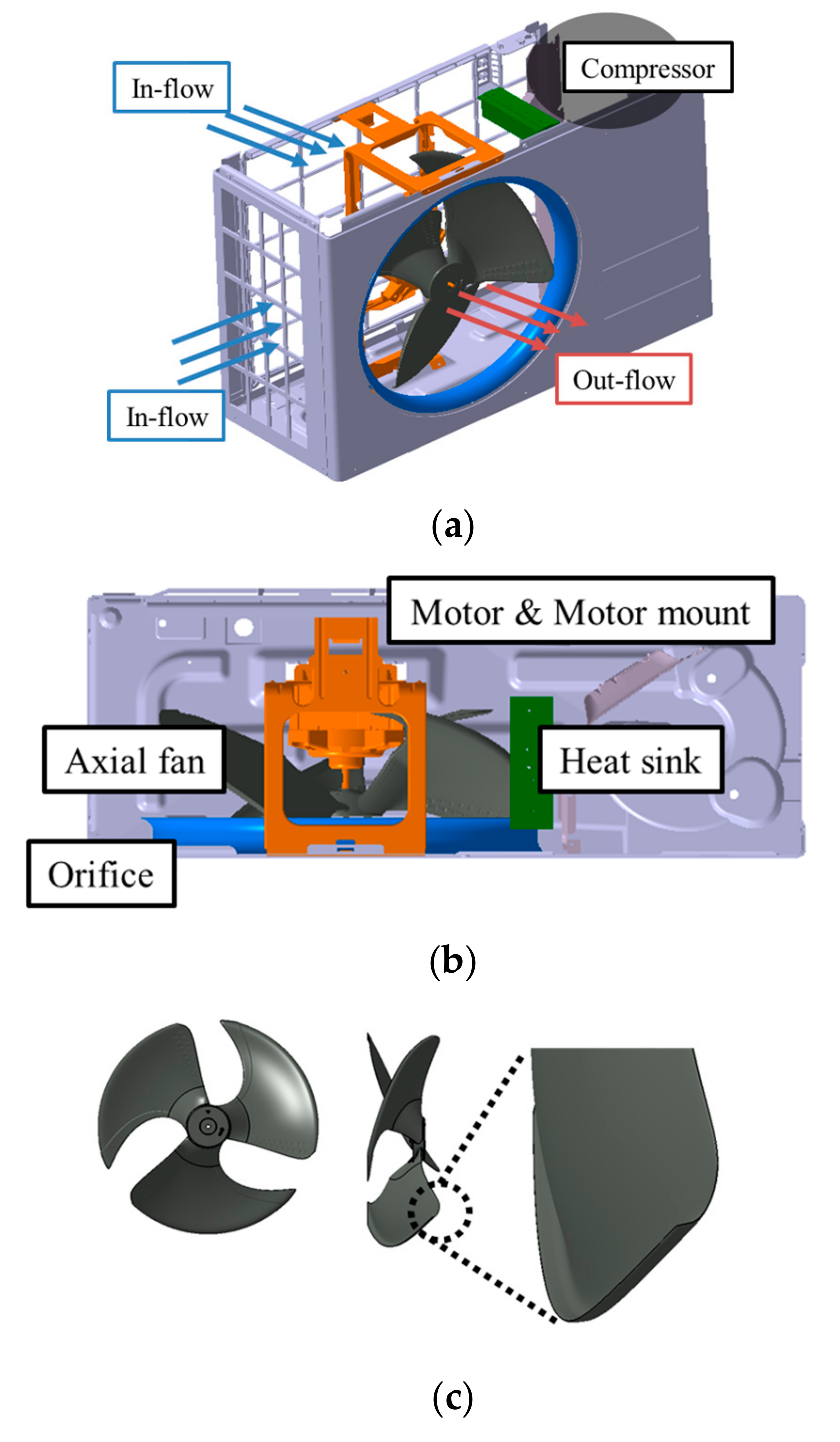
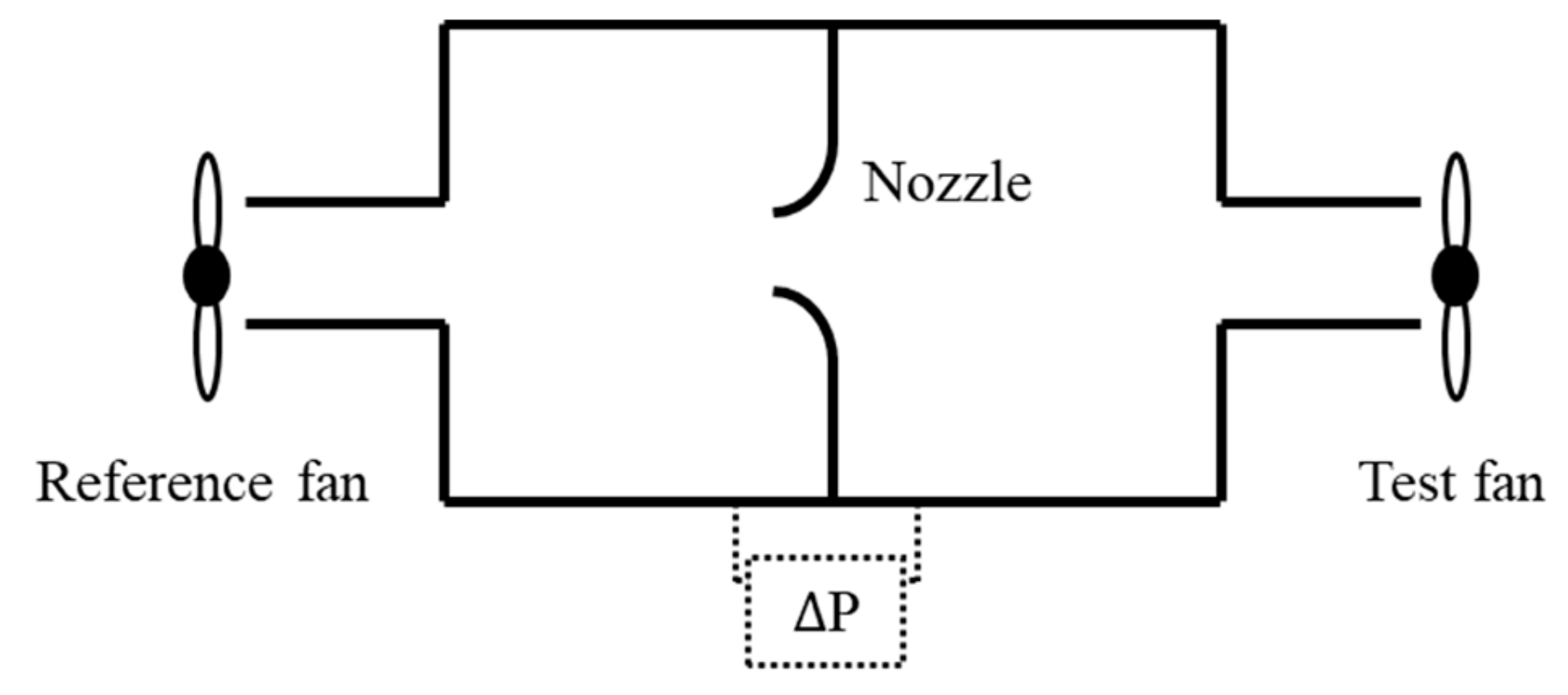
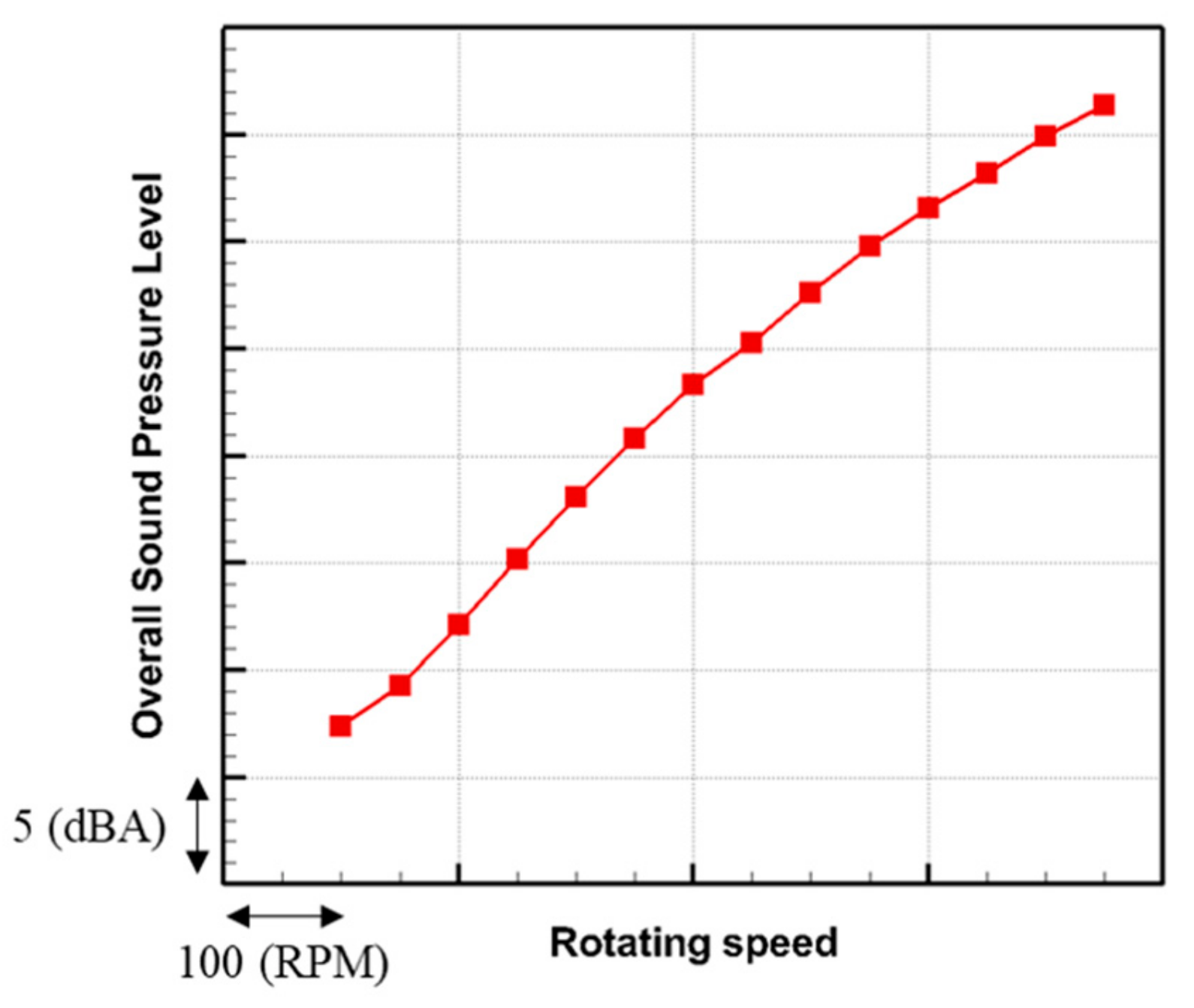

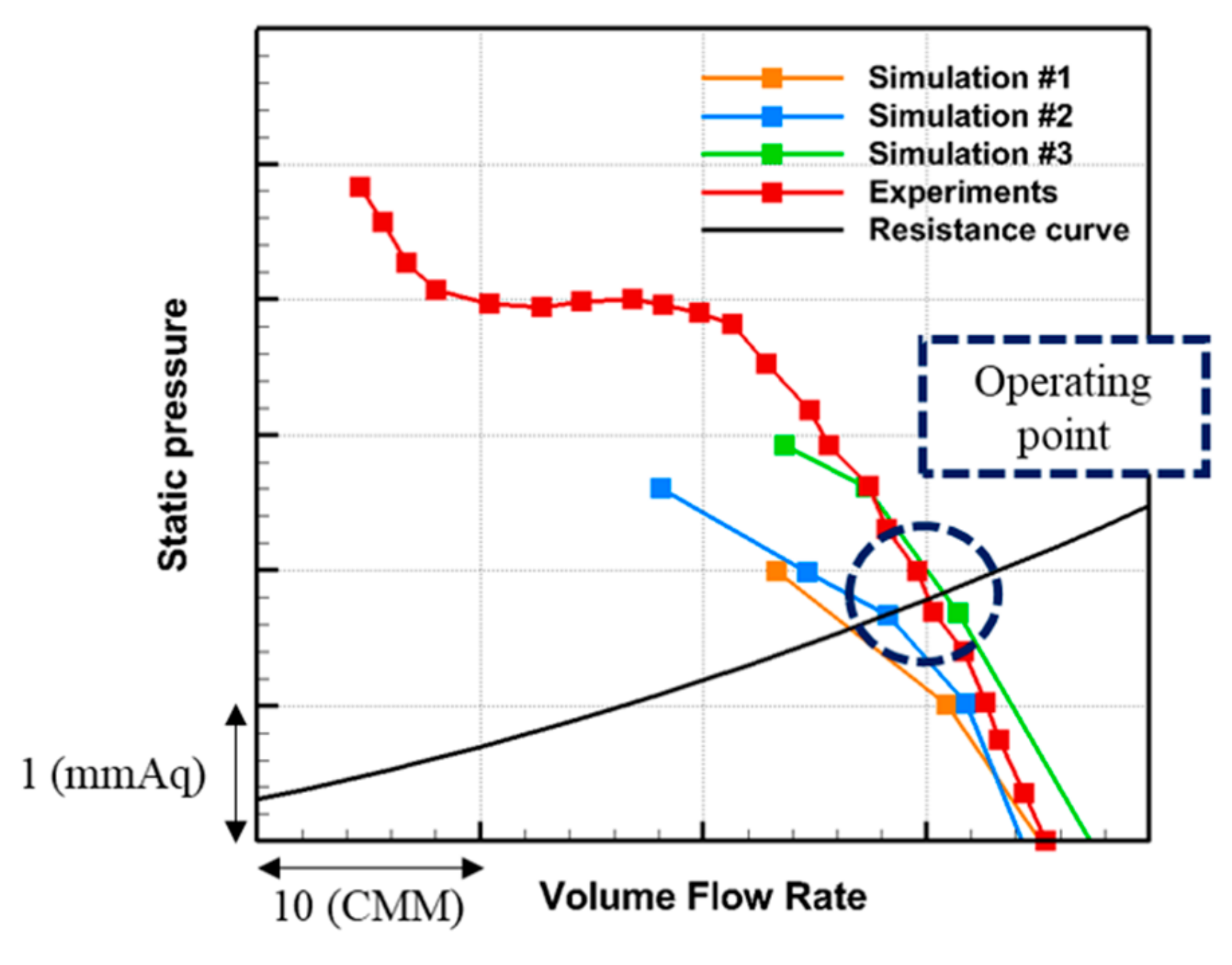


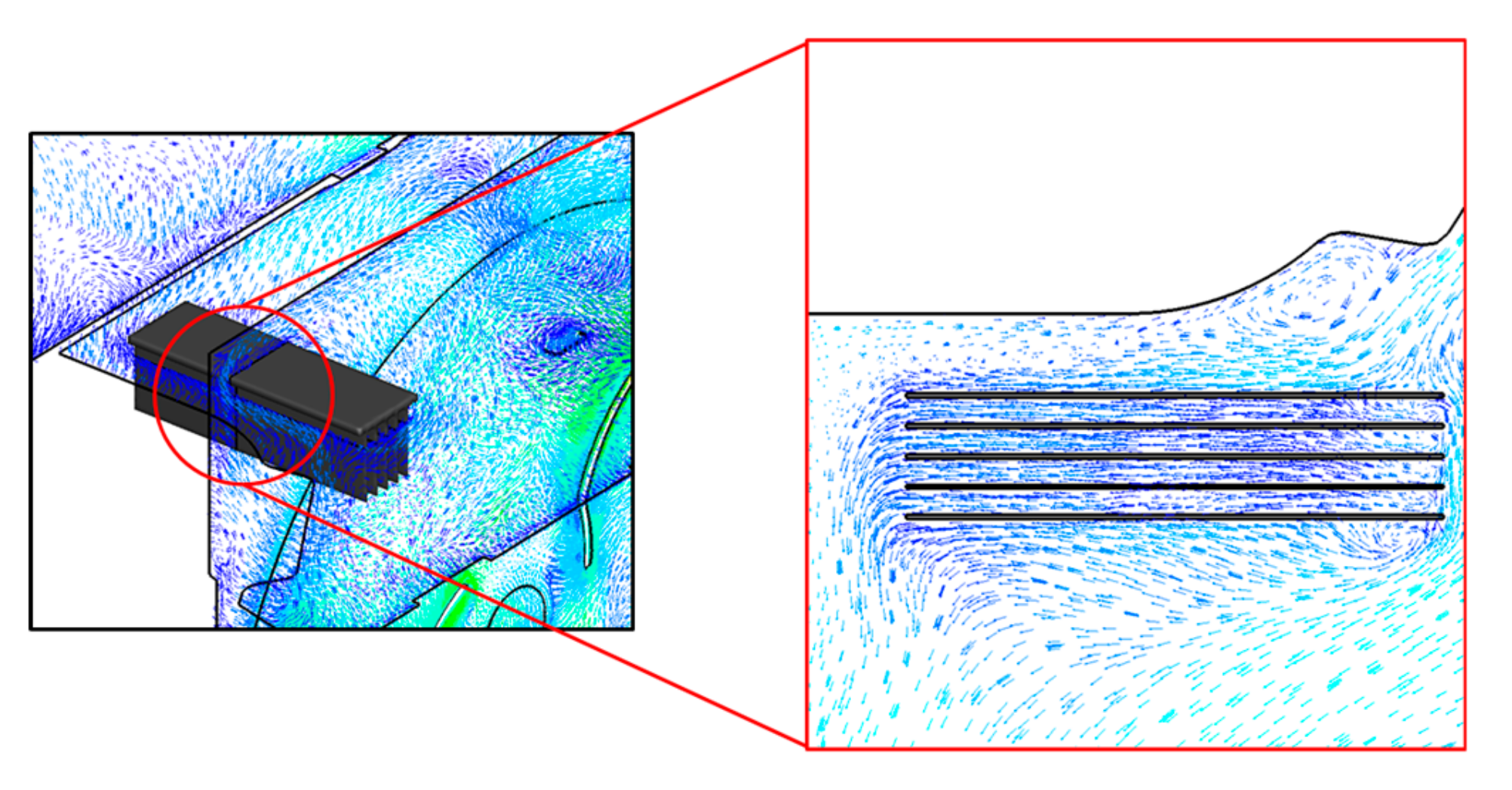

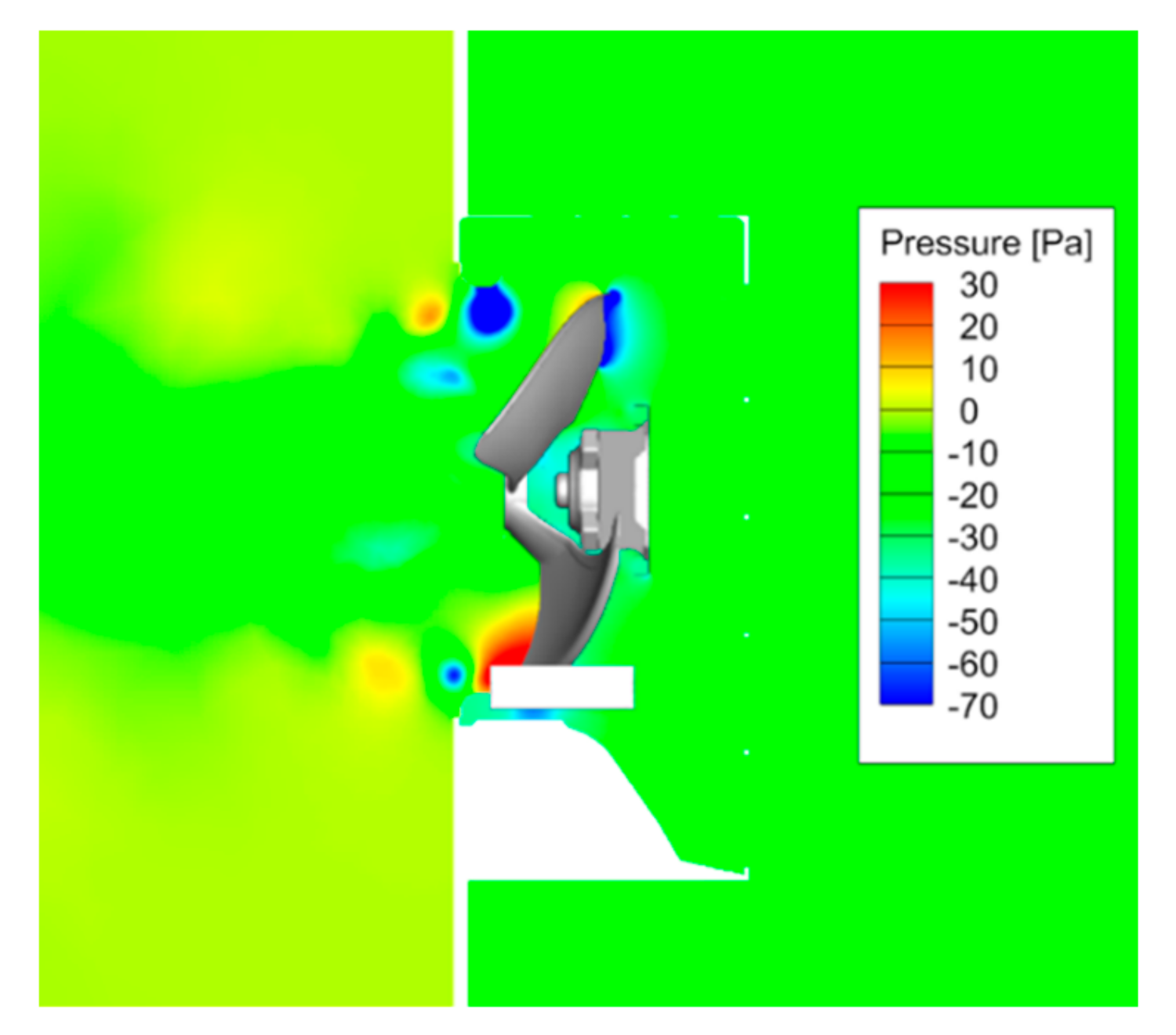
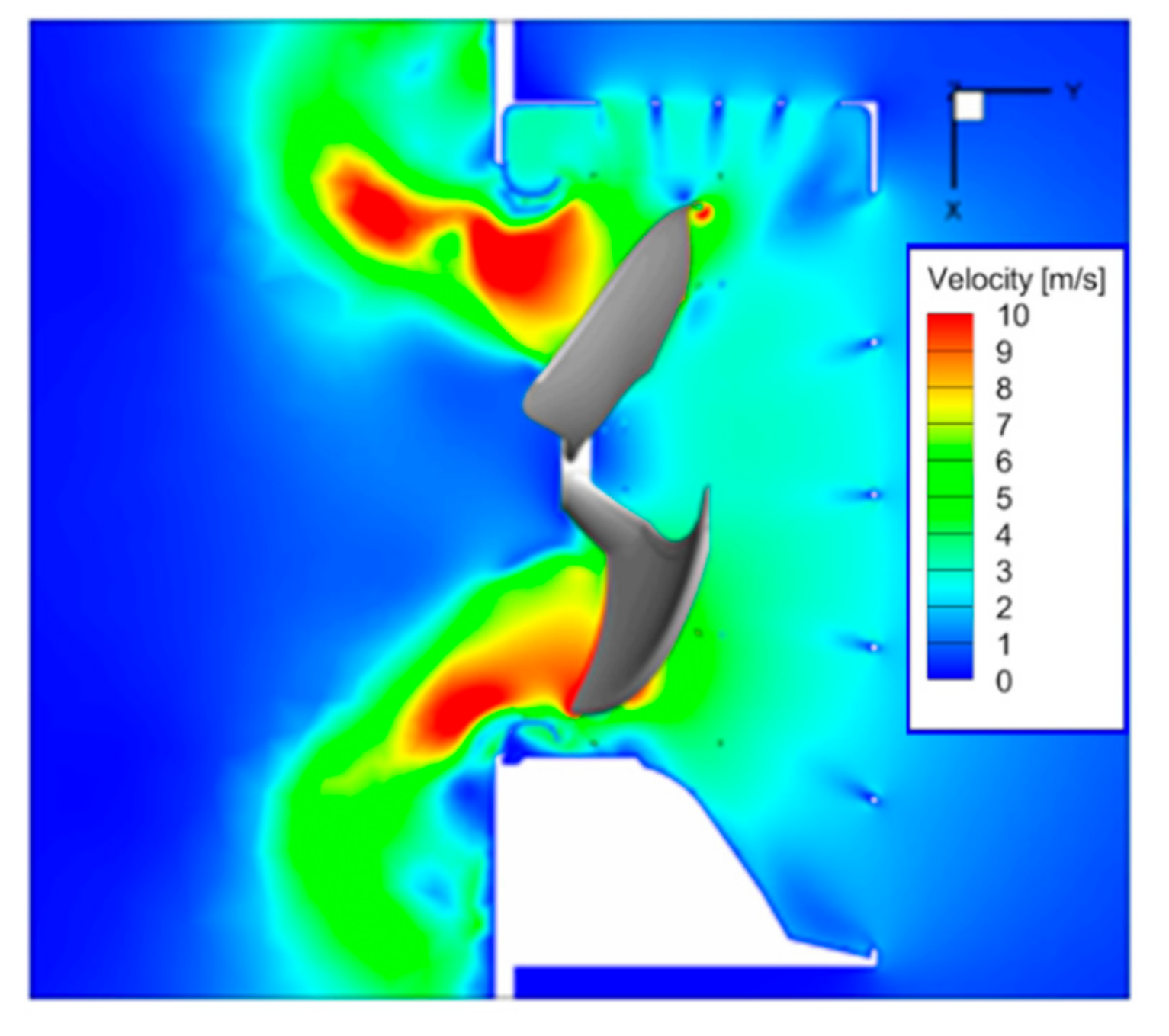
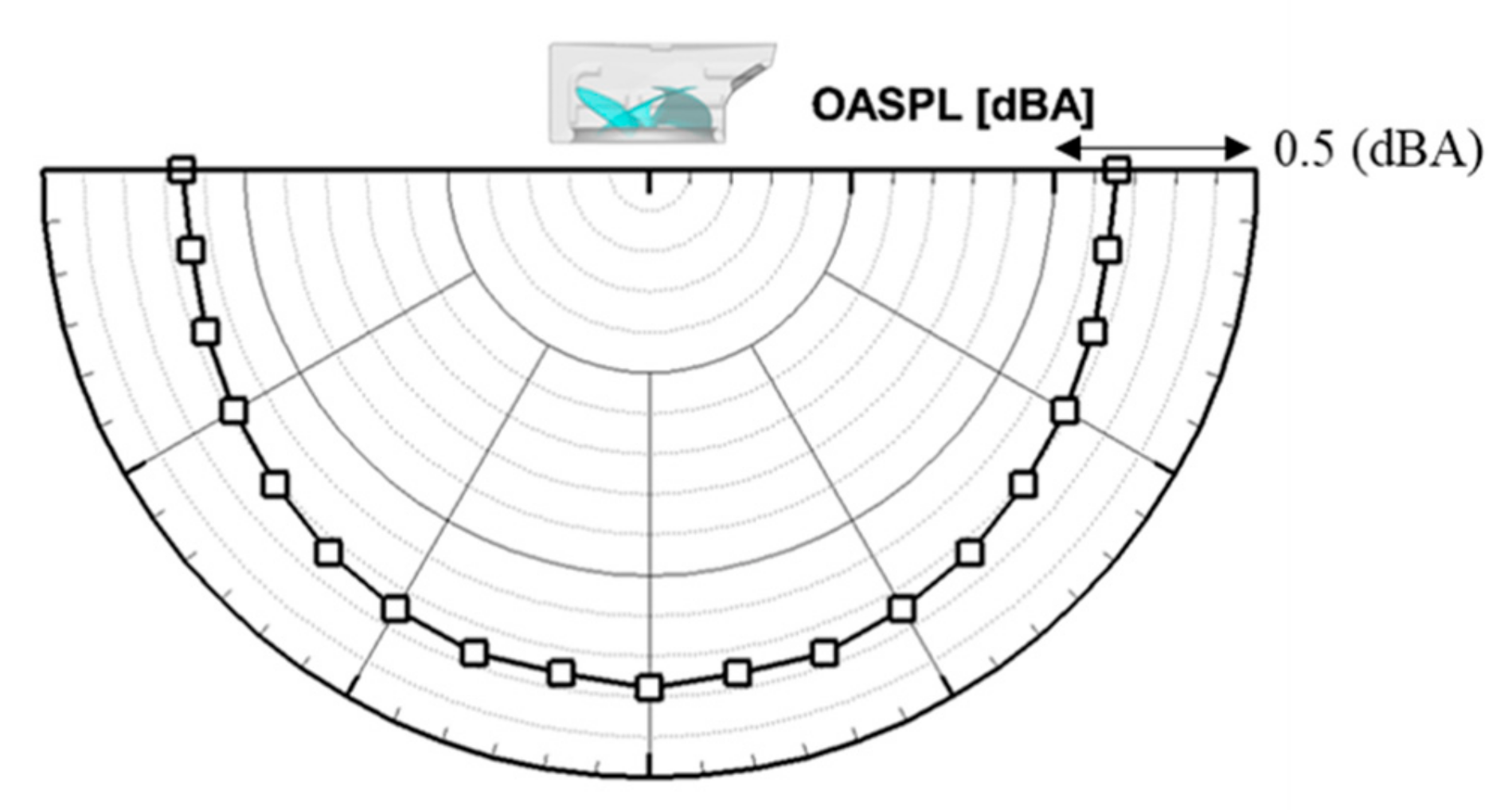
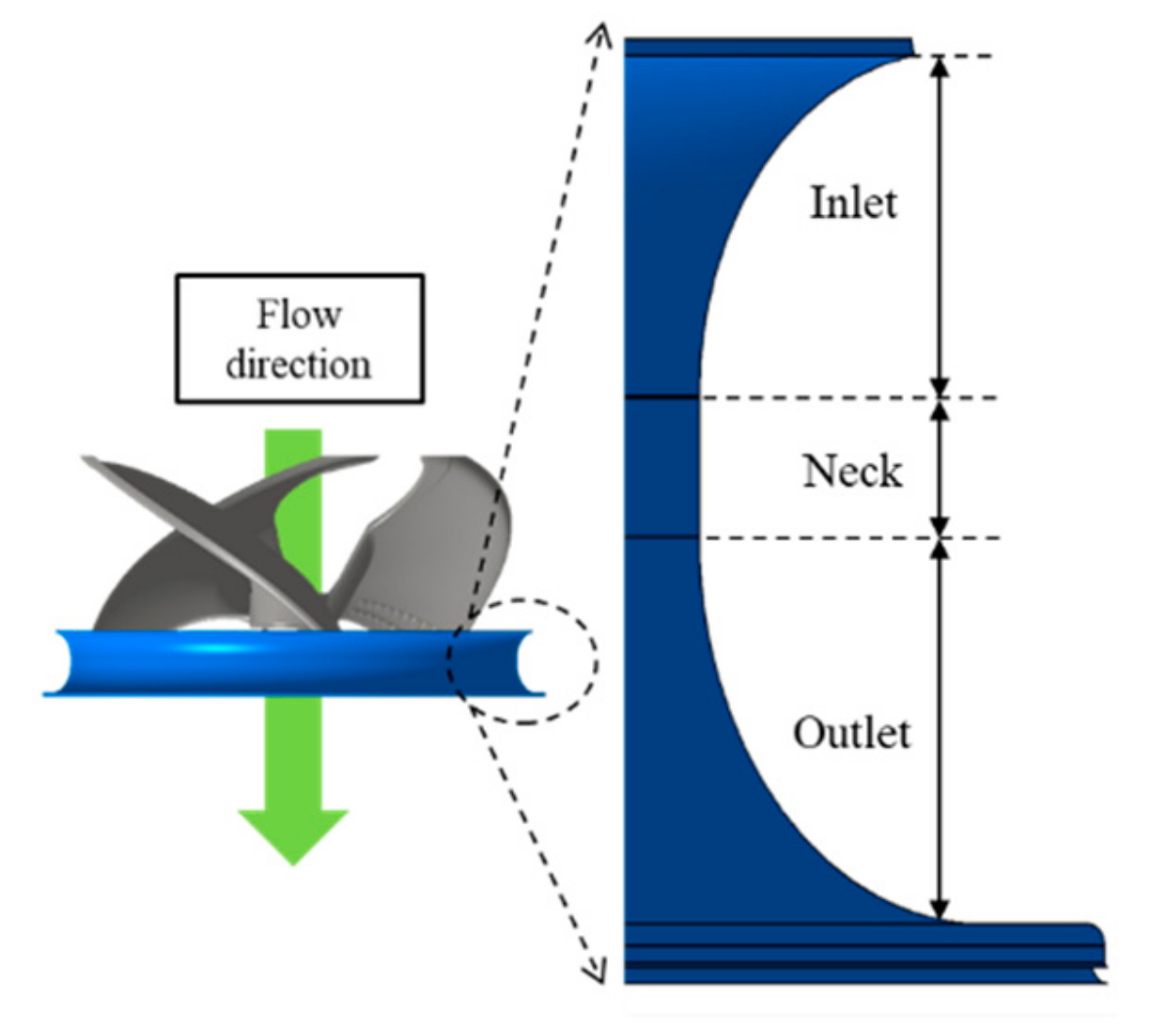
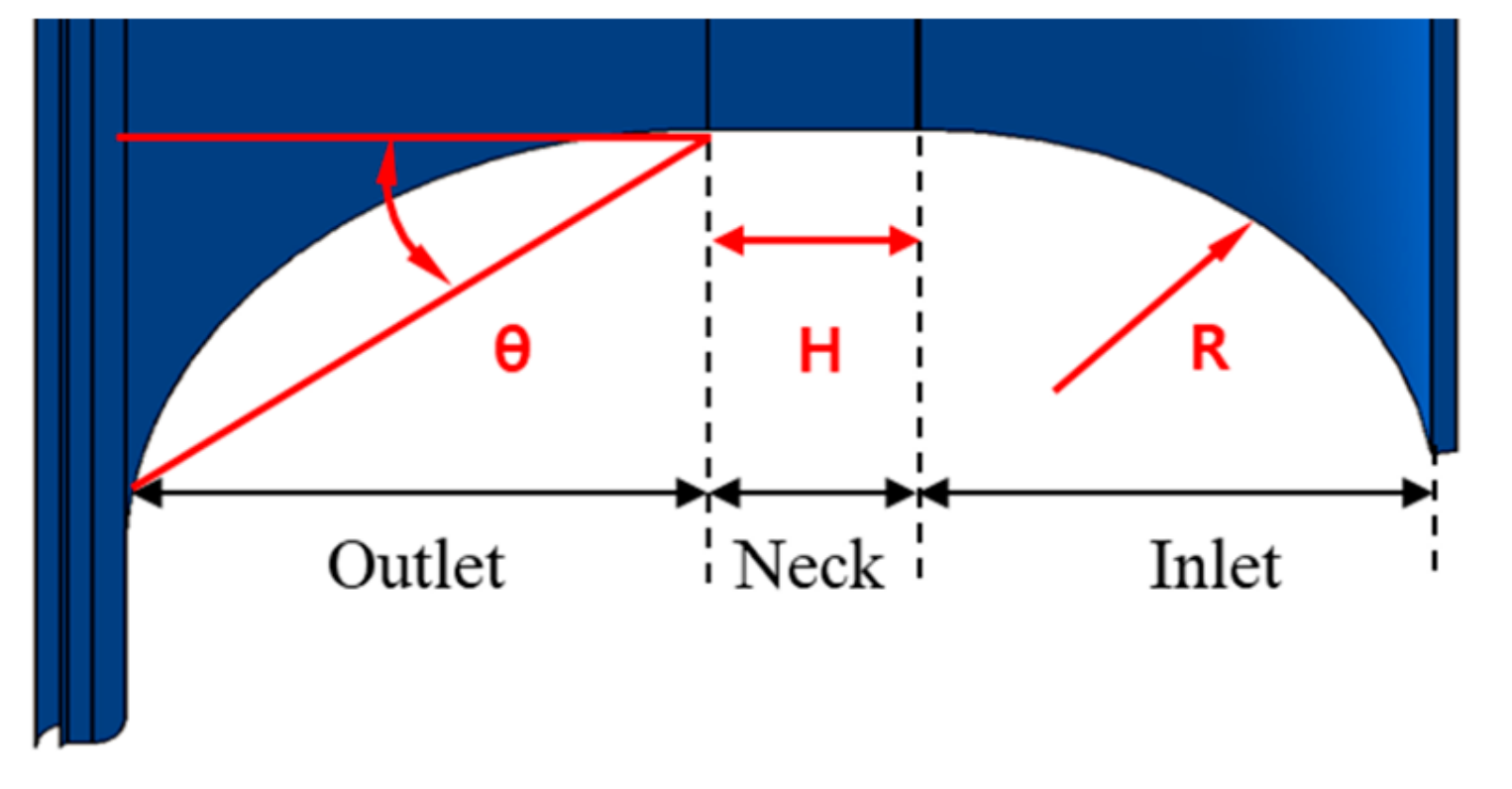

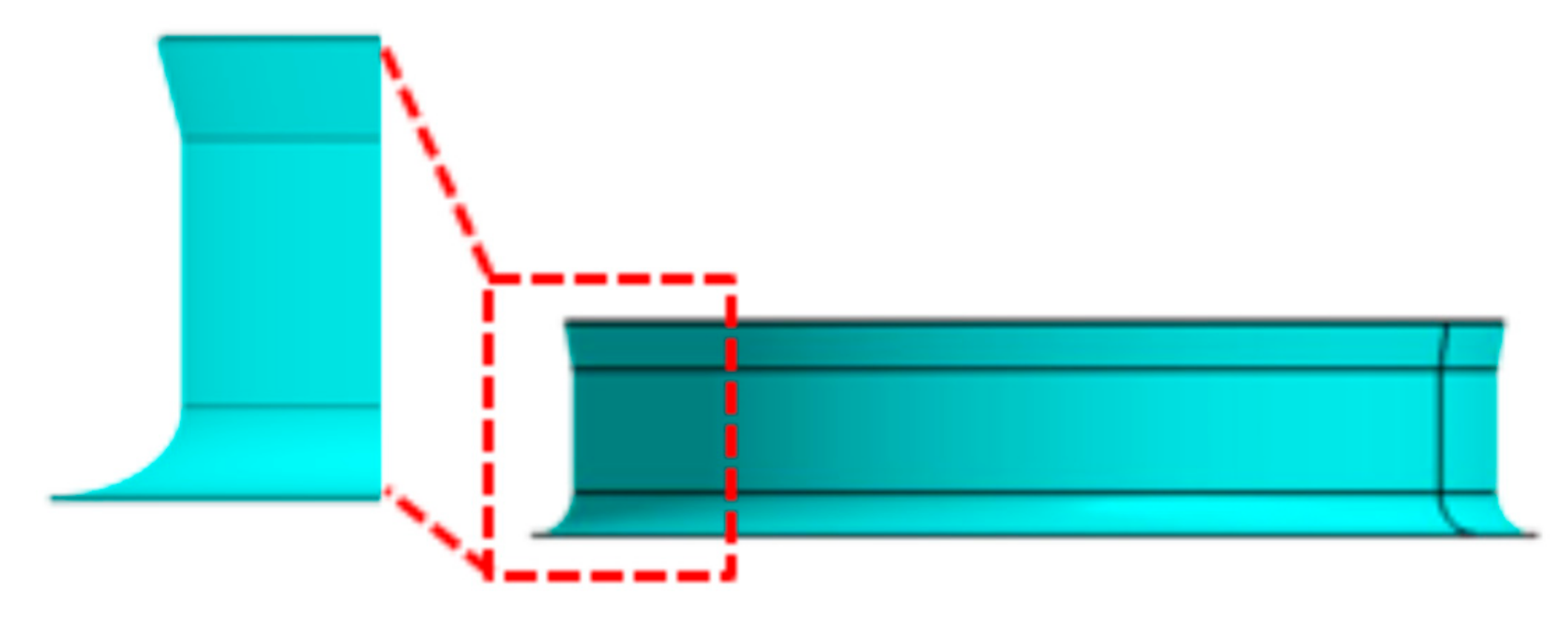
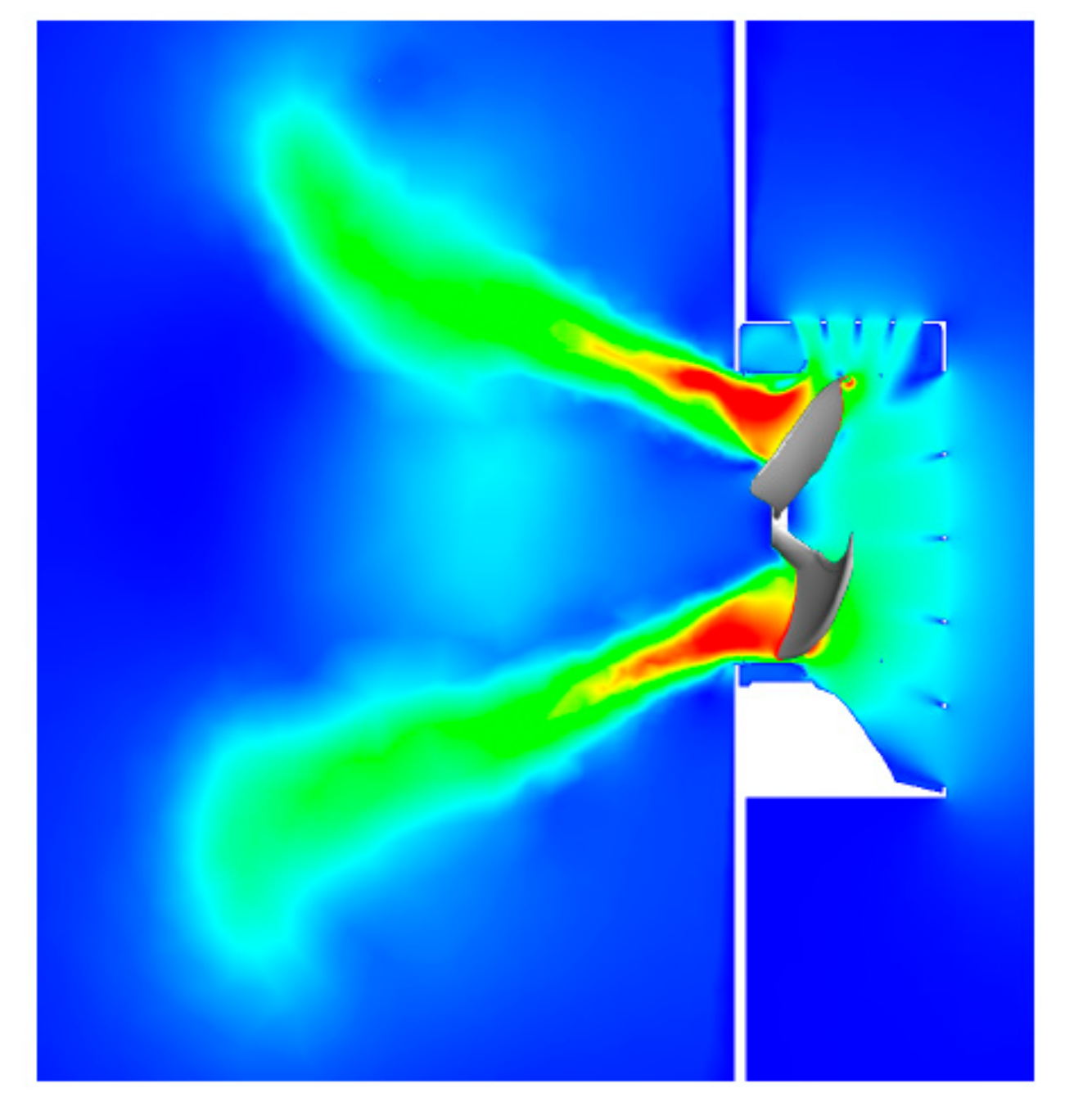
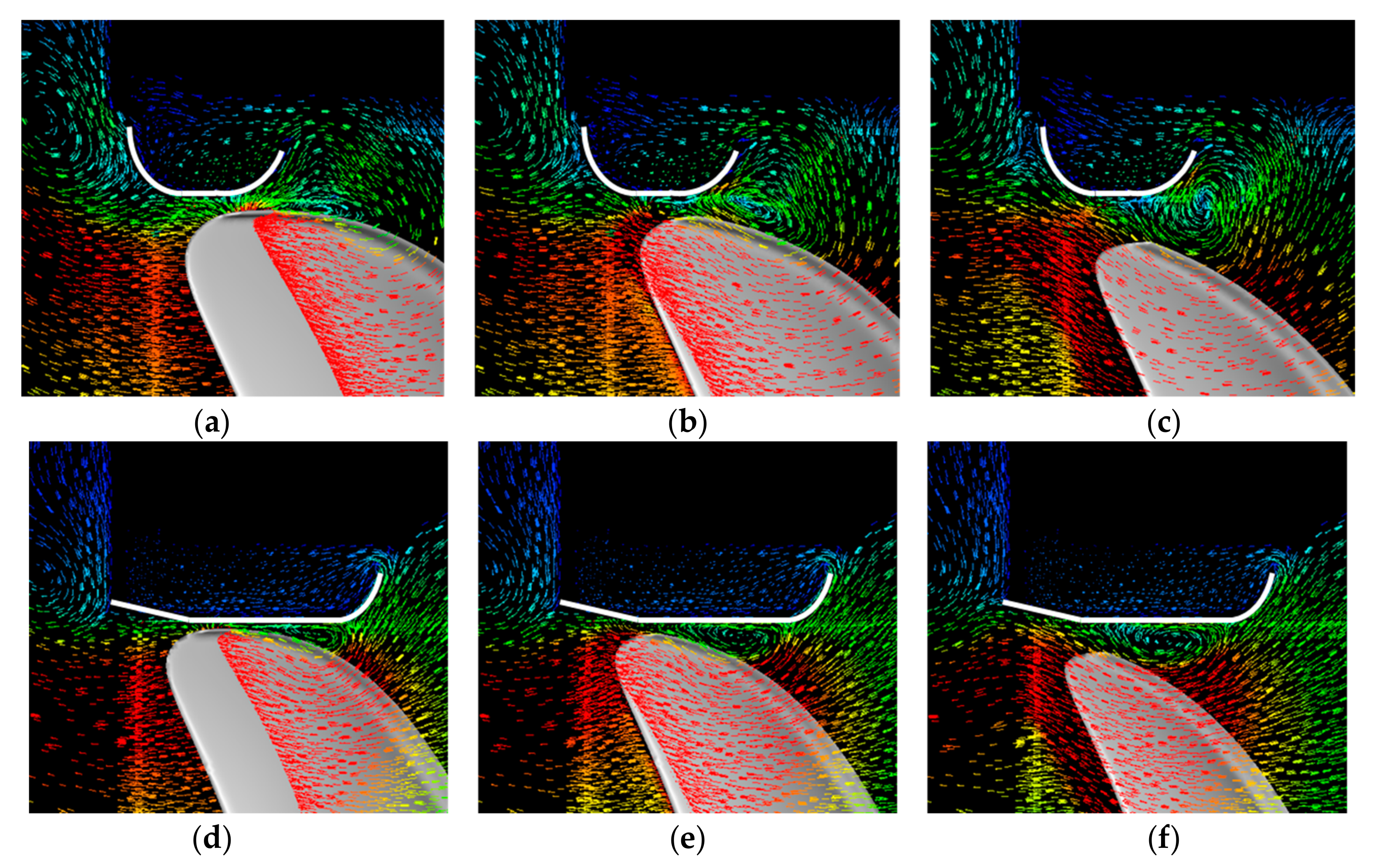
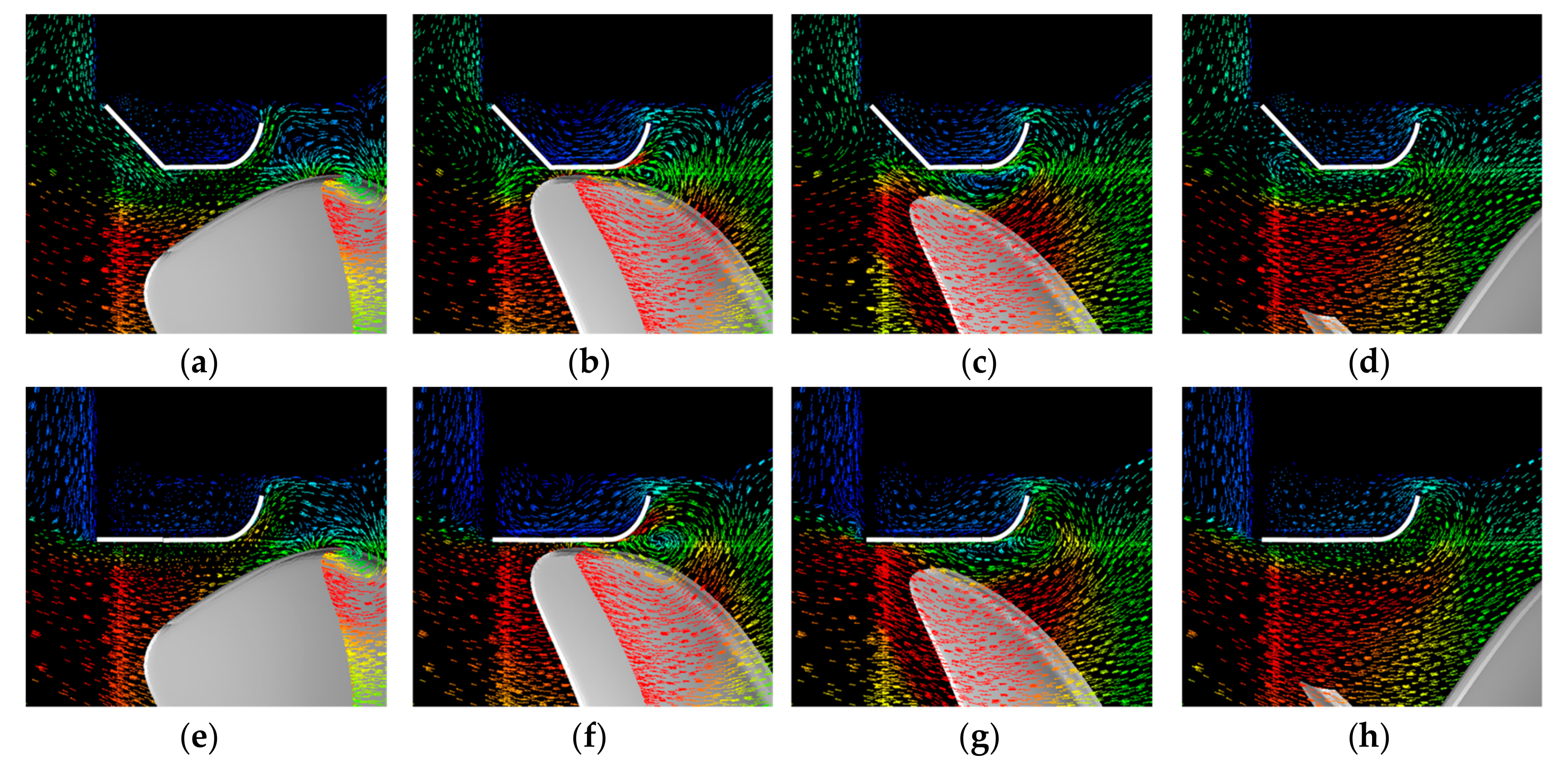
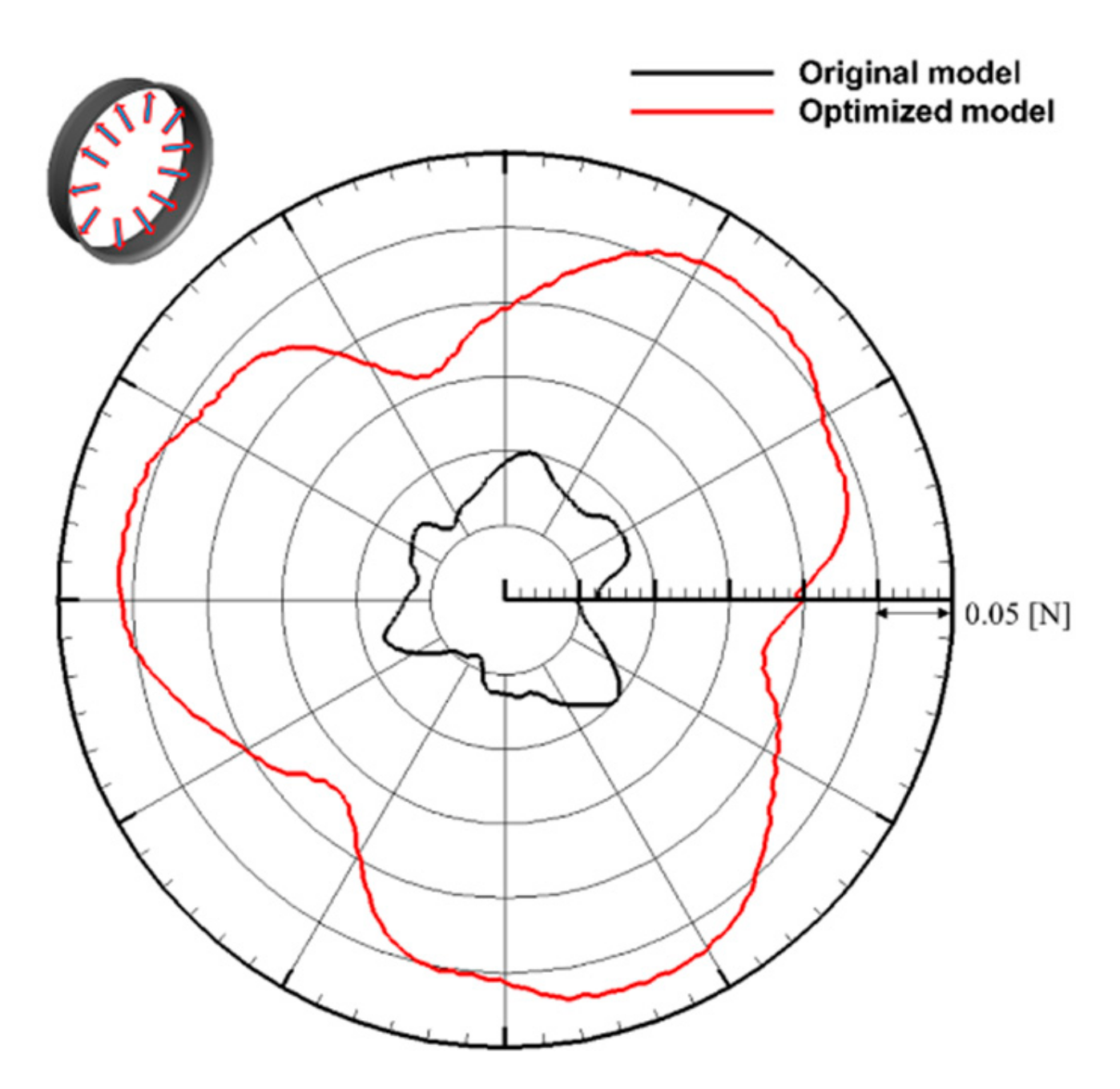
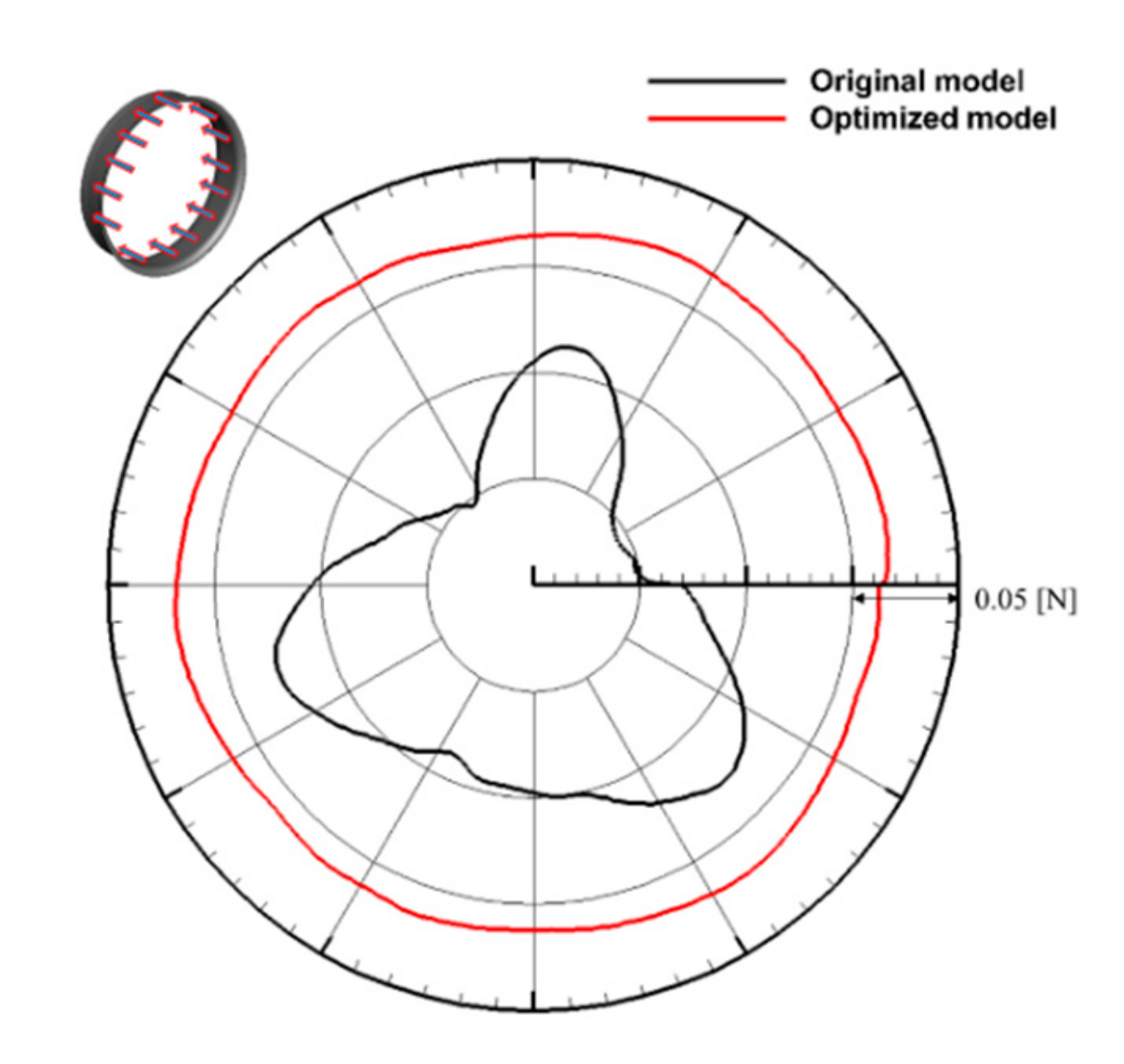
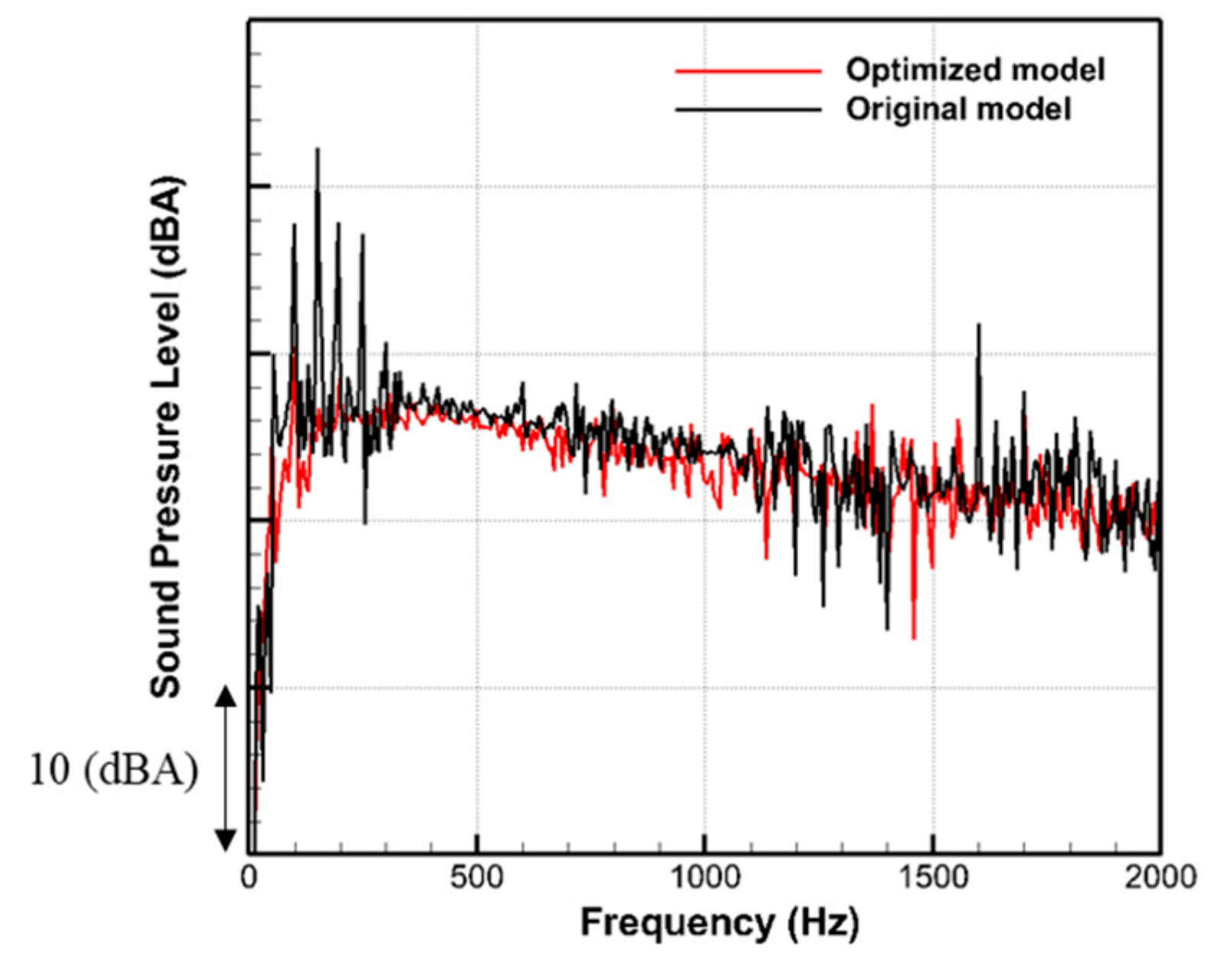
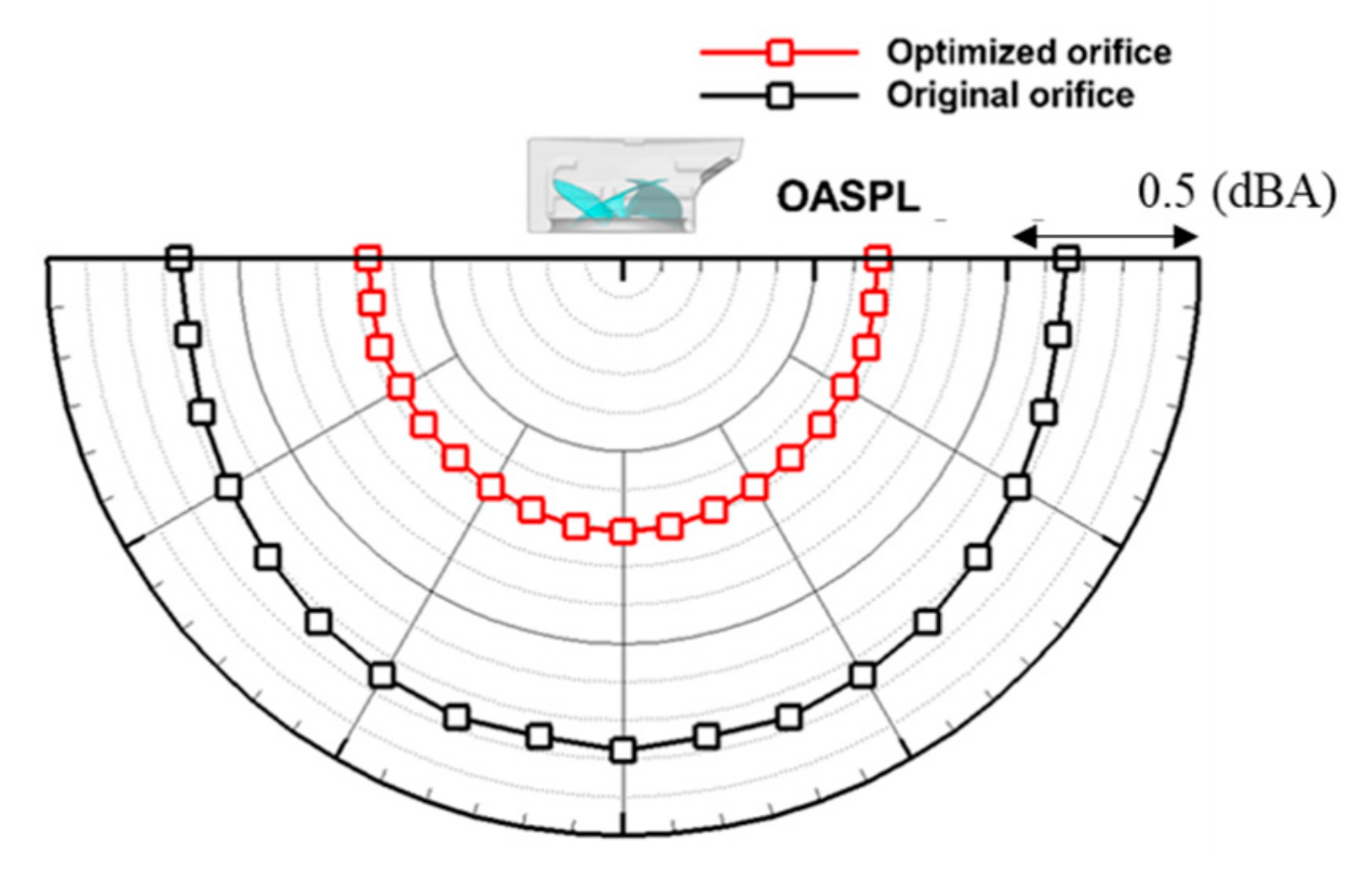

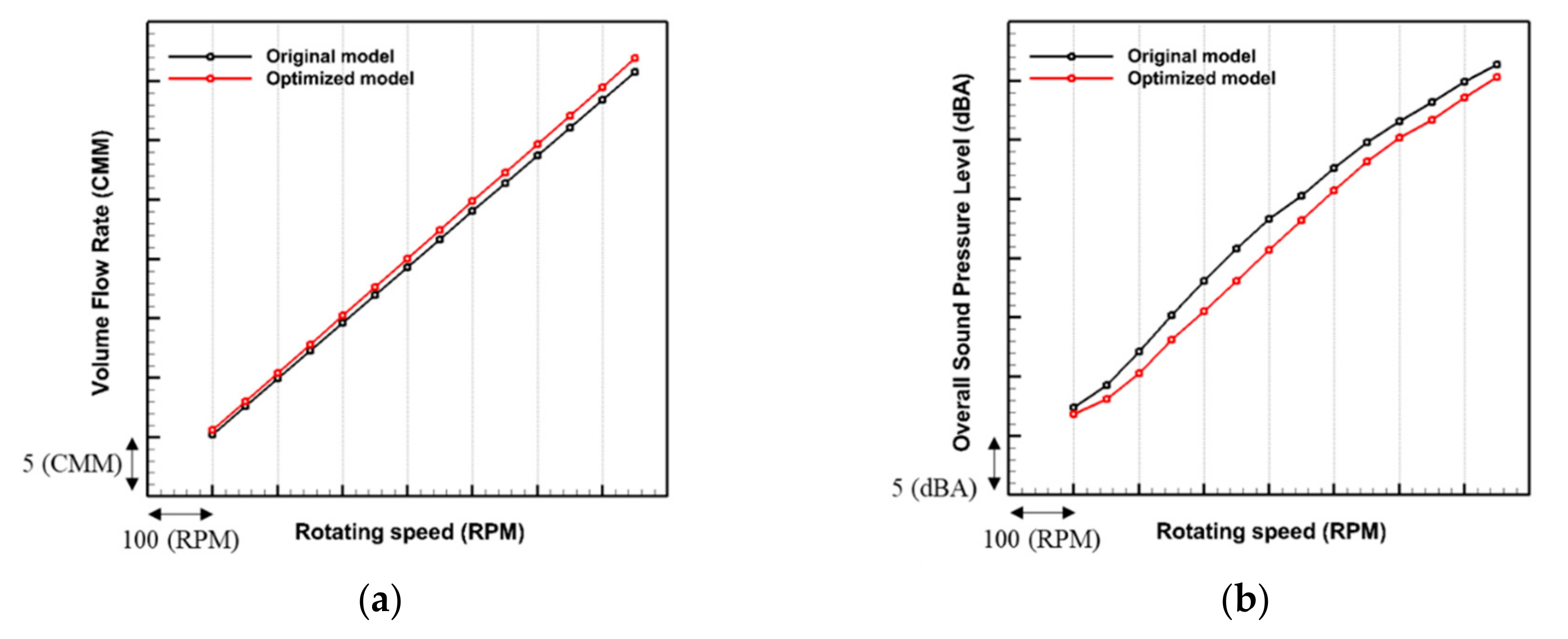
| Factors | Level | ||
|---|---|---|---|
| 0 | 1 | ||
| R | 12.3 | 18 | 23.7 |
| H | 8 | 27.5 | 47 |
| 13.1 | 28.8 | 44.5 | |
| Performances | Original Orifice | Optimized Orifice |
|---|---|---|
| Volume flow rate | A | 1.02A |
| Overall SPL (dBA) | B | B-2.8 |
| Input power (%) | C | 0.96C |
© 2019 by the authors. Licensee MDPI, Basel, Switzerland. This article is an open access article distributed under the terms and conditions of the Creative Commons Attribution (CC BY) license (http://creativecommons.org/licenses/by/4.0/).
Share and Cite
Park, S.M.; Ryu, S.-Y.; Cheong, C.; Kim, J.W.; Park, B.I.; Ahn, Y.-C.; Oh, S.K. Optimization of the Orifice Shape of Cooling Fan Units for High Flow Rate and Low-Level Noise in Outdoor Air Conditioning Units. Appl. Sci. 2019, 9, 5207. https://doi.org/10.3390/app9235207
Park SM, Ryu S-Y, Cheong C, Kim JW, Park BI, Ahn Y-C, Oh SK. Optimization of the Orifice Shape of Cooling Fan Units for High Flow Rate and Low-Level Noise in Outdoor Air Conditioning Units. Applied Sciences. 2019; 9(23):5207. https://doi.org/10.3390/app9235207
Chicago/Turabian StylePark, Se Min, Seo-Yoon Ryu, Cheolung Cheong, Jong Wook Kim, Byung Il Park, Young-Chull Ahn, and Sai Kee Oh. 2019. "Optimization of the Orifice Shape of Cooling Fan Units for High Flow Rate and Low-Level Noise in Outdoor Air Conditioning Units" Applied Sciences 9, no. 23: 5207. https://doi.org/10.3390/app9235207
APA StylePark, S. M., Ryu, S.-Y., Cheong, C., Kim, J. W., Park, B. I., Ahn, Y.-C., & Oh, S. K. (2019). Optimization of the Orifice Shape of Cooling Fan Units for High Flow Rate and Low-Level Noise in Outdoor Air Conditioning Units. Applied Sciences, 9(23), 5207. https://doi.org/10.3390/app9235207





